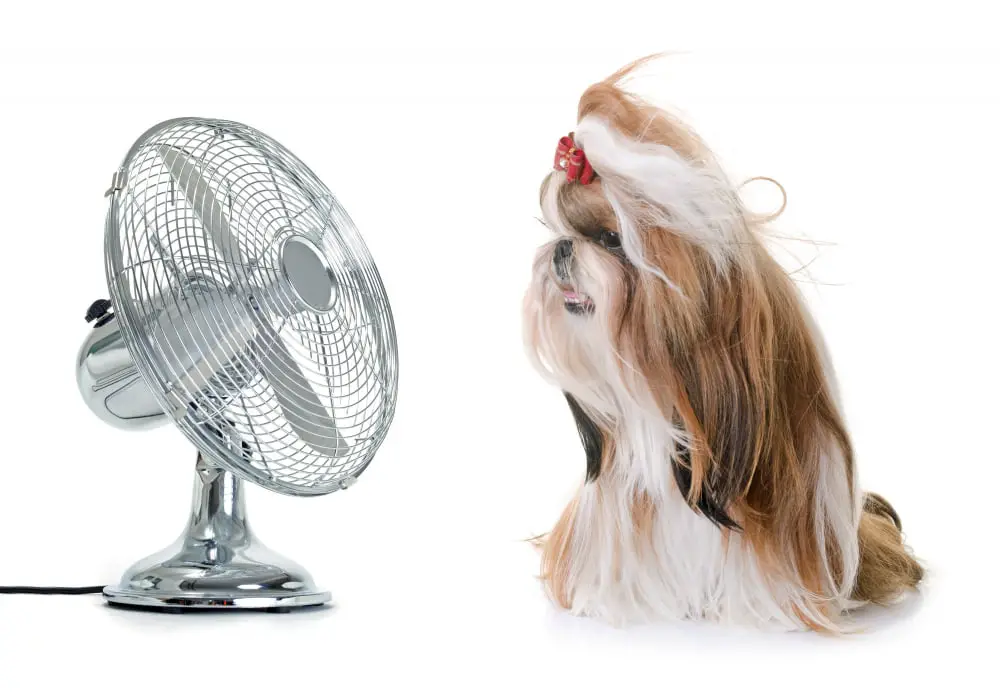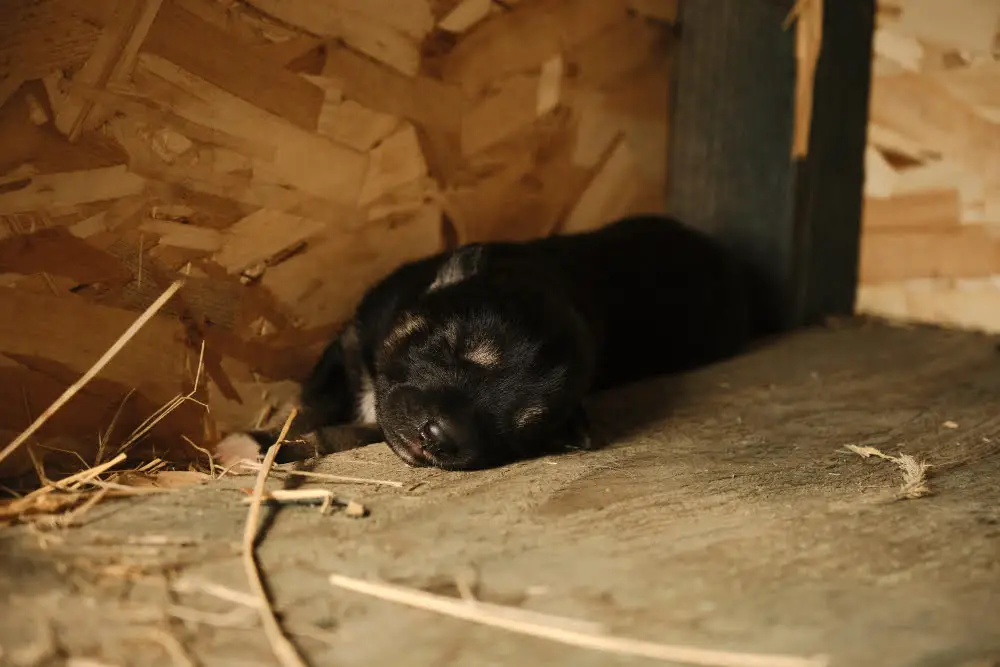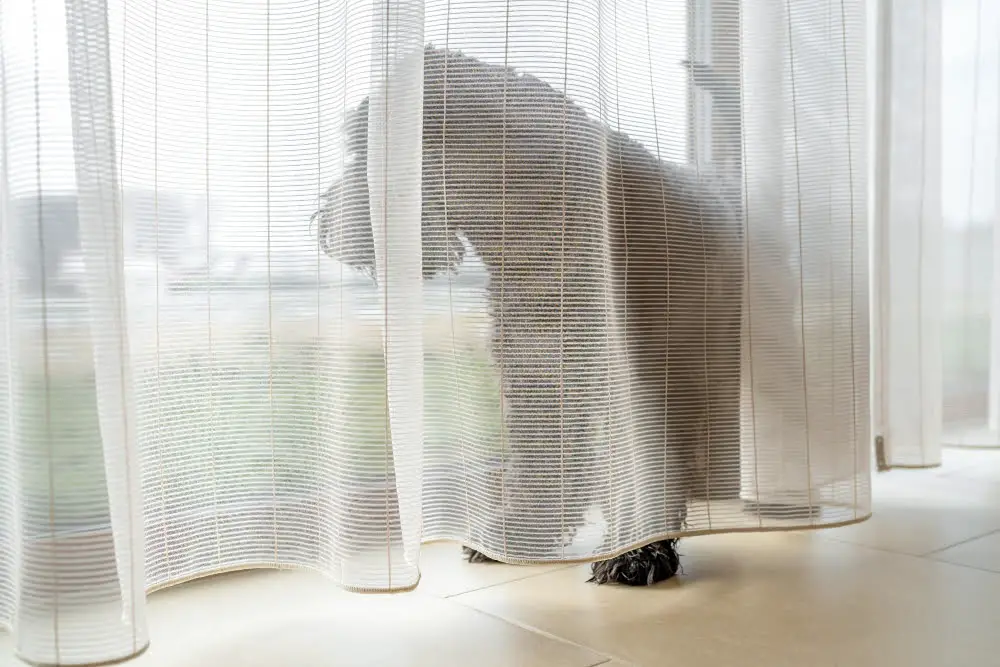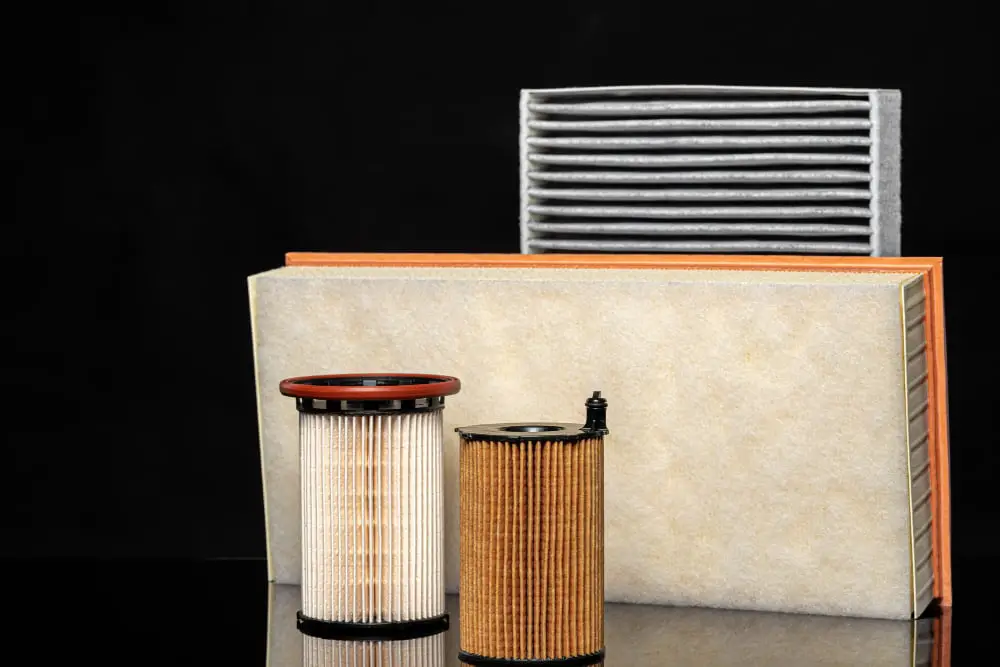Last updated on
Explore creative and functional ideas to incorporate a dog kennel into your garage, making it a comfortable space for your furry friend.
Incorporating a dog kennel into your garage can be a clever solution for pet owners seeking to provide a safe, comfortable space for their furry friends while also maintaining the functionality of their garage.
This article will delve into a variety of ideas to transform your garage into a pet-friendly haven, from choosing the right kennel size and material, to optimizing the layout for temperature control and comfort.
Whether you’re starting from scratch or looking to upgrade an existing setup, you’ll find a wealth of practical advice and creative inspiration to help you create a dog kennel that suits both your pet’s needs and your garage aesthetics.
Install Insulated Dog Kennels

Insulation provides a cool environment for your dog during summer and warmth during winter. A well-insulated kennel significantly improves your dog’s comfort, especially in extreme weather.
Key Points:
- Material Selection: Opt for insulated material such as foam board or thermal-ply to enhance kennel warmth.
- Wall Insulation: Protect all kennel walls – including the roof and floor – with insulation. Securely fasten insulation with proper adhesive.
- Doorway: Install a heavy-duty plastic flap to insulate the doorway yet allow easy access.
- Maintenance: Insulated kennels are easy to clean and durable. Regularly check and replace insulation as required to keep your dog comfortable.
Remember, protecting your dog from harsh weather conditions is just as important in a garage kennel as it is for a house.
Use of Heated Flooring for Kennels

Heated flooring is a crucial aspect of any garage kennel, especially in cold weather conditions. It provides consistent warmth, keeping your furry friend comfortable, and reduces the risk of health issues related to cold floors.
Typically, there are two popular options available: electric floor heating mats and hydronic heating systems.
- Electric floor heating mats are easy to install and provide a consistent degree of warmth but require an accessible power source. They are most suitable for smaller kennel areas.
- A hydronic heating system circulates warm water through tubes under the floor. It’s efficient, but installation can be complex and may require professional help. Suitable for larger spaces.
Keep in mind, heated floors should always be coated with a non-slip, waterproof, and easy-to-clean material to ensure safety and hygiene. Lastly, consider the heat settings – it’s essential they are adjustable to prevent overheating and maintain a comfortable temperature.
Integration of Automatic Water and Food Dispensers

Having established the essentials of a functional dog kennel in your garage, it’s noteworthy that it should also accommodate the regular feeding and hydration needs of your furry friend unaided. Enter the ingenious invention of automatic water and food dispensers.
Key Concepts:
- Convenience: Automatic water and food dispensers ensure your dog has access to food and water when necessary, reducing the worry about missed meals or dehydration.
- Programmability: Most automatic dispensers are programmable, meaning you can set specific times for meals, fostering consistency in your dog’s feeding routine.
- Portion Control: Dispensers also aid in controlling portion sizes, which is crucial if your dog is on a diet or needs to maintain a healthy weight.
- Hygiene: Fresh, clean water is always available for your dog, as many automatic water dispensers incorporate filtration systems. Automatic food dispensers keep meals covered until it’s feeding time, reducing exposure to environmental bacteria and insects.
Utilize these key points to ensure an efficient and comfortable kennel layout in your garage. Remember, happy dogs are often a hallmark of thoughtfully designed spaces that prioritize their needs.
Setup of Adjustable Lighting

Adjustable lighting can significantly add to your garage kennel’s comfort and ambiance. It’s essential to customize it based on your dog’s comfort and the time of day.
1. Energy-efficient LED lights: They are excellent for providing effective and cost-efficient lighting. These lights come with brightness control — ideal for regulating light intensity.
2. Color temperature: Opting for warm lights for overnight and cool lights for the daytime can mimic the natural sunlight cycle, keeping your dog’s circadian rhythm intact.
3. Positioning: Place lights in a way that they do not directly shine into your dog’s eyes. Lighting should be installed at a height or in an area where your dog cannot access it.
4. Smart Home Integration: By integrating your lighting setup with smart home devices, you can control light settings from anywhere, ensuring your pet’s comfort even when not at home.
Through an adaptive lighting setup, your dog’s kennel can be a haven of comfort throughout the day.
Placement of a Cooling Fan in Summer

Having a cooling fan can greatly enhance your dog’s comfort during the hot summer months. It’s essential to position it strategically, aiming to circulate the air rather than blowing directly onto the dog to avoid any discomfort or health issues.
Here’s what you need to know:
1. Strategic Placement: Keep the fan at a safe distance, away from reach to prevent accidents. Also, refrain from placing it directly against the kennel.
2. Circulate Air: Instead of blowing air directly onto your dog, which could irritate their skin and eyes, aim to circulate air within the garage. A rotating or oscillating fan works best for this purpose.
3. Avoid Heat Sources: Do not place the fan near appliances or areas providing off heat, as it can make the circulated air warm, negating the cooling effect.
4. Temperature Settings: During the peak summer, make sure the temperature setting is optimal. Not too cold as it can cause your dog to fall ill.
Remember, the goal of this setup is to keep your furry friend comfortable during the heat while keeping safety paramount.
Installation of a Small Workout/ Play Area

Allocating a section for physical activities within the garage-kennel setup is crucial. It can be as simple as placing durable, interactive toys for your pet. For larger breeds, consider installing ramps or agility courses to keep them stimulated.
Here are a few key points to bear in mind:
- Space Utilization: Factor in your dog’s breed and size when designing the area. Ensure there’s enough room for running and jumping.
- Durable Toys: Include toys such as balls and chewable items, sturdy enough to withstand daily ruff-and-tumble.
- Agility Course: If the garage permits, incorporating an agility course can foster motor skills and overall fitness.
- Safety: The play area should be free from harmful substances, sharp objects, or choking hazards.
- Accessibility: Ensure your dog can easily access the play area from the sleeping or eating sections of the kennel.
Ultimately, this area aims to provide a safe and engaging space for your four-legged family members to burn off energy and stay mentally stimulated.
Use of Soundproof Materials for Walls

Choosing the appropriate materials for soundproofing kennel walls is vital. Not only will it create a less stressful environment for the pet, but it also ensures peace within the household.
Key considerations include:
- 1. Density: Opt for dense materials such as mass-loaded vinyl or foam panels which can effectively reduce noise transmission.
- 2. Surface: Reflective surfaces repel sound back into space so absorbing materials like acoustic foam tiles should be preferred.
- 3. Thickness: A thicker barrier provides better soundproofing, but remember it should not compromise the interior space of the kennel.
- 4. Type of noise: Identify the noise you want to block—higher pitched sounds require different materials than low-frequency sounds.
Effectively, a well-soundproofed dog kennel in the garage will grant your pet a serene space and will minimize disturbance within your dwelling. Your canine will certainly appreciate this thoughtful implementation.
Directional Heating Elements for Winter

Installing a directional heating element becomes essential in winter to provide warmth and comfort in the garage kennel. Consider the following key points:
- Position the heater for optimal coverage: The setup should be such that all portions of the kennel receive adequate warmth.
- Safety first: Select heaters that automatically shut off when tipped over. Some heaters also come with temperature control and timers.
- Energy efficiency: Choose heaters with energy saving features to avoid high electricity bills. Infrared heaters can be a good option.
- Noise level: Opt for silent or low-noise heaters to ensure your dog’s peace and comfort.
- Maintenance: Refrain from using heaters that demand complex maintenance. The easier it is to clean, the longer it will last.
In essence, the directional heating element should ensure it provides uniform warmth throughout the kennel, ensuring the dog’s comfort without compromising on safety and energy efficiency.
Organization of Dog’s Toys and Accessories Area

Keeping your dog’s items tidy will not only reduce clutter but also establish a sense of orderliness in the garage. Setting up designated spots for each type of item is key.
1. Toy box: Use sturdy, chew-proof storage containers to stow away play things. Boxes with a removable lid are ideal so that the pets can pick toys at their leisure.
2. Accessory hooks: Install wall hooks at a height accessible to you but out of the dog’s reach. Hang leashes, harnesses, coats, and bags of treats here.
3. Food storage: Store food in airtight containers to retain freshness and keep pests away. Place containers on an elevated shelf, off the floor and difficult for the dog to access.
4. Medicine cabinet: Set up a small cabinet for storing any required medications, flea/tick products, and grooming supplies. Ensure it’s locked to prevent unintended ingestion.
5. Bedding area: Design a cozy spot with comfortable, easy-to-clean bedding. Rotate bedding regularly to provide a clean and inviting sleep spot.
Remember, regular maintenance of these areas is critical to keep the garage kennel neat and appealing.
Incorporate a Dog Washing Station

Maintaining cleanliness is an integral part of dog kennel management, thus leveraging your garage space to fit a small washing station proves beneficial. This way, bath time mess is confined to the garage rather than spreading throughout your home. When choosing a location for the washing station, consider the plumbing system, drainage, hot water supply, and easy accessibility.
Key Points:
- Assistance with overhead fixtures: Ideally equipped with shower heads or faucets, to make bathing a comfortable task.
- Elevated tubs or sinks: Essential to avoid back strain from bending over, and large enough to comfortably fit your dog.
- Non-slip mats: Essential for ensuring that your dog does not slip or panic during the bath.
- Storage cabinets: To organize shampoos, towels, brushes, and dog hygiene products.
- Drainage system: Critical to prevent water clogging and maintain cleanliness.
Remember, safety is paramount, so all materials and installations should be pet-friendly. In addition, choose waterproof materials that are easy to clean and resistant to molding. With a dog washing station in your garage, your pet’s cleansing needs can be easily catered to, in a designated space dedicated for that purpose.
Creation of Separate Sleeping and Playing Sections

Ensuring comfort and orderliness in your dog’s domain mandates the need for a two-section kennel. These distinct areas keep the dog’s playtime separate from their downtime.
1. Sleeping Section: This should be quiet, cozy, and slightly dimmed to promote rest. Soft, non-toxic, chew-resistant bedding and a favorite toy or blanket can aid in creating a sense of security. It will effectively establish this area for relaxation and sleep.
2. Playing Section: In contrast, this should be more open and well-lit, with toys and space for mini-exercises. A sturdy, scratch-proof flooring will tolerate your dog’s playful antics.
By implementing this structure, you provide your pet an organized environment that reflects the natural order they’d recognize – play during the day, rest at night, bringing about a sense of safety and serenity. Not only does this set the tone of the environment, but it’s also highly beneficial for your dog’s physical and mental wellbeing.
Installation of CCTV for Easy Monitoring

Having a surveillance system can greatly enhance the safety of your pets and bring you peace of mind. The placement and features of the camera are pivotal for optimal monitoring.
Key points to consider:
- Camera Position: Mount at a height that provides a comprehensive view of the kennel. This allows owners to observe their dog’s activity and behavior.
- Night Vision: Ensures clear visuals even in low light, enhancing security during night hours.
- Motion Detection: An added layer of security that triggers alerts whenever motion is detected in the kennel.
- Two-way Audio: Allows the owner to communicate with their pet remotely, promoting interaction and reassurance.
- Quality: Opt for HD resolution for clear images and videos, facilitating accurate monitoring.
Remember, these considerations are crucial in creating an effective surveillance system in your garage kennel. The right CCTV setup believes in prevention, preserves serenity, and promises care for your furry friends around the clock.
Use Non-toxic, Waterproof, and Easy to Clean Paint

When selecting paint for your canine’s quarters, it’s crucial to prioritize the overall health and safety of your pets. Hence, the recommendation for non-toxic paint. It ensures your dog isn’t exposed to harmful chemicals, which could potentially result in an array of health issues.
Waterproof paint proves to be beneficial in a couple of ways. First, it effectively repels moisture, thus reducing the likelihood of mildew or mold buildup — a common concern in spaces such as garages. Second, it enables easier cleanup when messes occur.
Practicality also ought to be considered when applying paint to your dog’s kennel. Therefore, opt for easy to clean options. Adhering to this guideline will ultimately save cleaning time, preventing permanent stains from accidents or spills.
Key Points:
- Non-toxic paint prevents exposure to harmful chemicals.
- Waterproof paint repels moisture, reducing mold buildup.
- Easy-to-clean paint ensures swift and efficient cleanup.
Kennel Design With Escape-proof Latches

Ensuring your dog’s safety is paramount in any kennel design. One way to guarantee this is by selecting a secure, escape-proof latch system. Not all dogs are the same; some are cunning escape artists while others are relatively docile. Choose a latch system with the following characteristics for a fail-safe design:
- Robust Material: Opt for heavy-duty steel latches renowned for durability and strength.
- Complex Mechanism: Find a latch system with a mechanism too intricate for a dog to manipulate.
- Placement: Attach the latch high enough so it’s out of the dog’s reach, yet convenient for human access.
- Lockable Option: Consider a latch that has a provision for a padlock or key-lock for additional security, especially for outdoor kennels.
- Smooth Operation: The latch should operate smoothly, with no jamming or sticking, to ensure convenient access.
Remember, an effective latch should balance security with accessibility to provide a safe and convenient environment for the dog.
Hang Curtains for Privacy

Privacy plays a critical role in a dog’s kennel. By draping some carefully chosen curtains around their space, you provide them with an added layer of seclusion. This can conclude their day with less anxiety and assure a tranquil resting environment, which is especially important if the garage sees frequent activity.
Key points to consider when planning for curtains in a dog kennel:
- Material: Use durable, easily washable fabrics to ensure longevity and hygiene. Avoid materials that can easily fray or might be harmful if ingested by a curious pup.
- Coverage: Decide on the coverage based on your dog’s preference. Some might prefer total seclusion, while others would feel comfortable with partial coverage.
- Fastenings: Ensure the curtains are securely fastened. The fixtures should be sturdy enough to withstand a bored or anxious dog.
- Pattern: Opt for darker colors or patterns that can mask minor stains and blemishes, reducing the frequency of washes.
- Measures: Use dog-safe measures to train your pets, so they don’t pull or chew on the curtains which maintain the original purpose and longevity of the curtains.
Placement of Chew-resistant Bedding Materials

Comfort and durability are essential when considering the ideal bedding for your dog’s garage kennel. Opting for chew-resistant materials can minimize replacement costs and deter the risk of your pet ingesting harmful material debris. These materials are often robust, designed to withstand sharp teeth and maintain their structure even after rigorous chewing.
Here are some key points to consider:
- Material Quality: Consider ballistic nylon or Kevlar-construction materials for high durability.
- Product Design: Look for reinforced corners and hidden seams to minimize areas that dogs typically target.
- Comfort Factor: Despite their toughness, these materials should still offer sufficient cushioning.
- Maintenance: Ensure that the bedding is machine-washable for effortless cleanup.
- Size: It should fit perfectly in the kennel, not too small to slip around or oversized to protrude out.
These components equip your garage kennel with a long-lasting sleep and rest area for your pet, combining comfort with practical functionality.
Install Air Filters for Fresh Air

Air filters significantly contribute to maintaining a healthy environment within the kennel. Installing them can help minimize the accumulation of pet dander, hair, and dust, ensuring smoother airflow and reducing potential allergens. This not only keeps the garage smelling fresh but also prevents respiratory complications in dogs.
Here are a few key points:
- High-Efficiency Particulate Air (HEPA) filters can capture minute particles, removing more allergens.
- Regular replacement of filters ensures maximum effectiveness.
- Automated filter systems require less manual intervention.
- Position the filter system for optimal air circulation throughout the kennel.
- Consider the dog’s size and breed as some may produce more allergens than others.
Build Multiple-sized Kennels for Multi-dog Families

When catering for a multi-dog household, it becomes crucial to respect the size and space needs of each pet. From the petite Chihuahua to the robust German Shepherd, accommodation should cater to the unique needs of each breed.
1. Size Appropriation: Ensure that each kennel is built proportionate to the size of each pet. A small kennel for large dogs might lead to cramps and discomfort, while a large space for smaller dogs could make them feel unsafe.
2. Spatial Arrangement: Place the kennels strategically. Larger dogs typically require more headroom and length, whereas smaller dogs require compact, cosy spaces.
3. Accessibility: Keep the smaller kennels closer to the ground and larger ones raised if needed. This positioning offers ease of access for each dog.
4. Private Zones: Offer each dog its privacy by creating a sense of isolation within their individual kennels.
Remember, while variation in design is essential for each kennel, maintaining a consistent theme or aesthetic across all kennels preserves the cohesive look of your garage decor.
Installation of Weatherproofing Features

Weatherproofing is an integral part of setting up a garage dog kennel. Taking a step further from insulation, it ensures comfort for your pet through the extremes of weather. There are a few key points to bear in mind:
1. Material selection: For the main structure of your kennel, choose materials that can withstand moisture and severe temperatures. Composites, high-grade plastics or stainless steel are ideal choices.
2. Sealing gaps: Ensure to fill or seal any gaps and cracks in the kennel, which can let in drafts or water.
3. Roofing: Opt for a waterproof, heat-absorbing roof over the kennel. Consider using a material such as rubberized roofing.
4. Door Flaps: These can be utilized to prevent wind or rain from entering while still allowing the door to remain open for ventilation.
5. Flooring: An elevated floor can prevent cold and damp from the ground. Combine this with heated flooring and robust surfacing to combat the harshest winter months.
By giving due attention to these elements, your canine friend’s kennel becomes a haven, making them feel comfortable and secure in any weather.
Optional Sleepy Time Background Music System

An optional sleepy time background music system can drastically improve your dog’s sleeping pattern. Here are the main reasons:
- Soothing effect: Soft, classical music helps to calm dogs, reducing their anxiety and stress levels.
- Consistent routine: Using background music can signal bedtime, helping your dog understand it’s time to sleep.
- Noise buffer: A background music system can help mask garage noise, providing a peaceful environment for undisturbed rest.
- Variety: These systems often allow for a range of music options allowing you to discover your pet’s preference.
Keep in mind, the volume and type of music are essential variables. Music should always be kept at a low volume and preferentially be soft and slow. With these practices, your dog’s kennel transformation could reach new heights of comfort and functionality.




